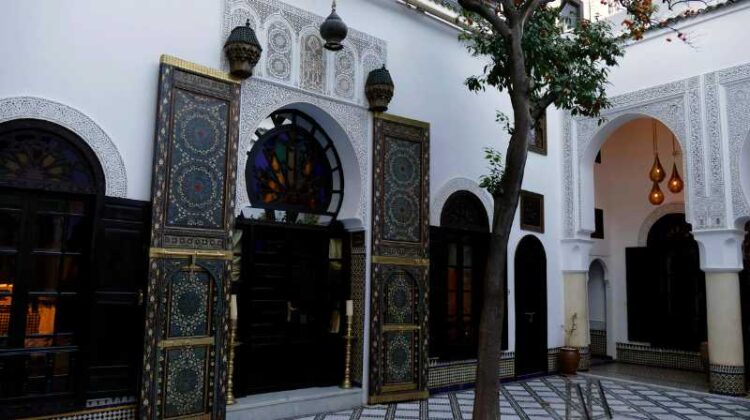
Riads are multi-story traditional Moroccan houses that derive their name from the Arabic word for heaven or garden, signifying their unique open-air Andalusian-style indoor courtyards, often featuring a garden, a marble fountain, a pool, or a combination of all three.
These courtyards serve as the centerpiece, with two or more levels of rooms and balconies overlooking the ground level.
The roof is typically designed as a rooftop terrace, offering panoramic views of the old Medina.
Riads are not just buildings; they embody an eclectic architectural style, colorful courtyard oases, and an ethereally exotic ambiance.
They are hidden gems, both for locals seeking an authentic Moroccan experience and for tourists.
Whether you’re planning to visit or seeking inspiration, stay with us as we delve into the characteristics, various functions, renovation and preservation efforts, and tips for choosing the right Riad.
We’ll also share some of our favorite Riads
Table of Contents
Architectural Features of Moroccan Riads
Central Courtyard
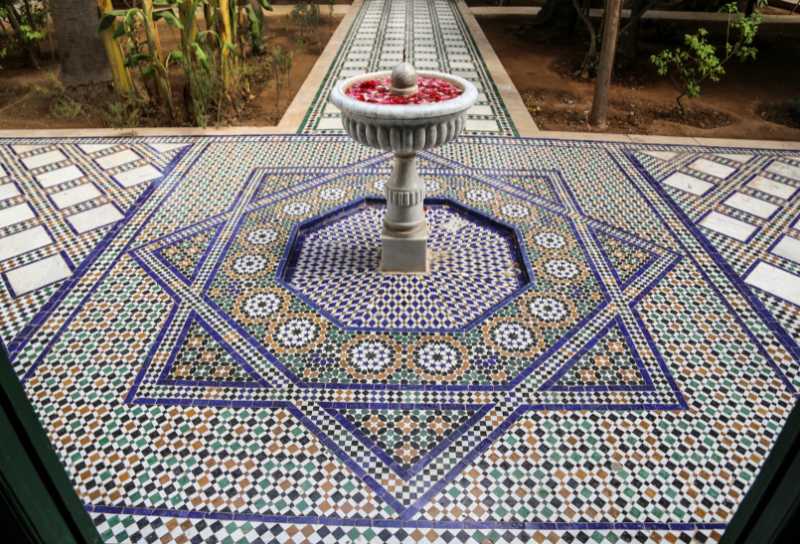
Riads’ towering solid walls with no windows, or small clerestory ones, veil an exquisite courtyard with serene garden beds surrounding a traditional marble fountain and a marble pool.
Another showstopper is the rooftop terrace that usually offers a breathtaking view of the wondrous medina.
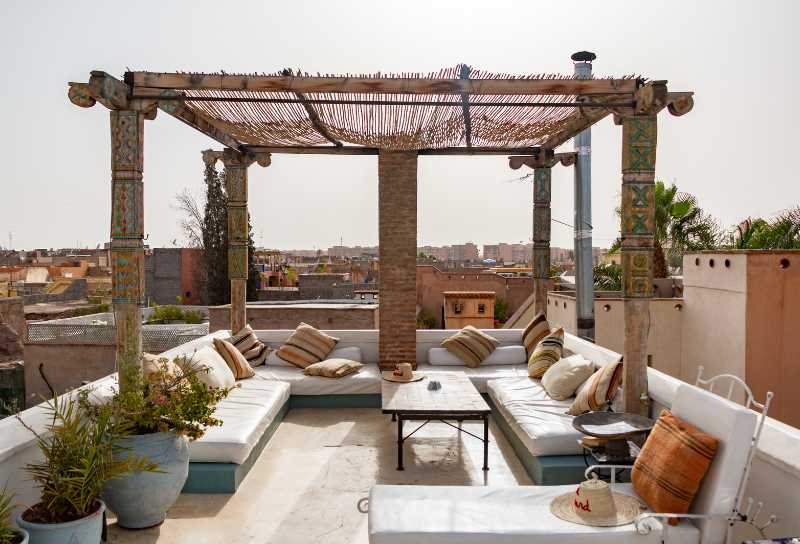
Ornate Wood Carvings
Morocco is known for its wood carving”; an art form inherited by immensely talented ‘Maalems’.
For centuries, these craft masters have been skillfully and laboriously conjuring-up hand carved wood art, painted in the traditional “Zouaq” featuring enthralling arabesque or geometric patterns.
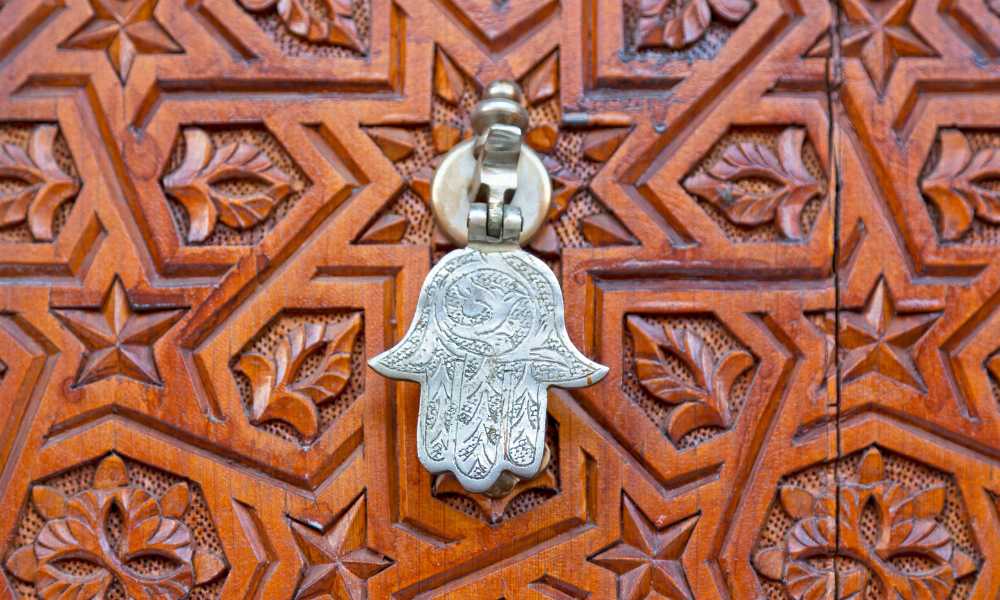
Right from the entryway and until they reach their private rooms, Riad visitors are met with artistic yet highly functional embossed wooden pieces.
From outdoor gates and knockers all the way to interior windows, door frames, balcony parapets, lanterns and room dividers all fashioned from a broad selection of raw wood including the distinctive Moroccan thuya wood, almond, olive, oak, eucalyptus, walnut, mahogany, citrus and so on.
Intricate Mosaic Tilework
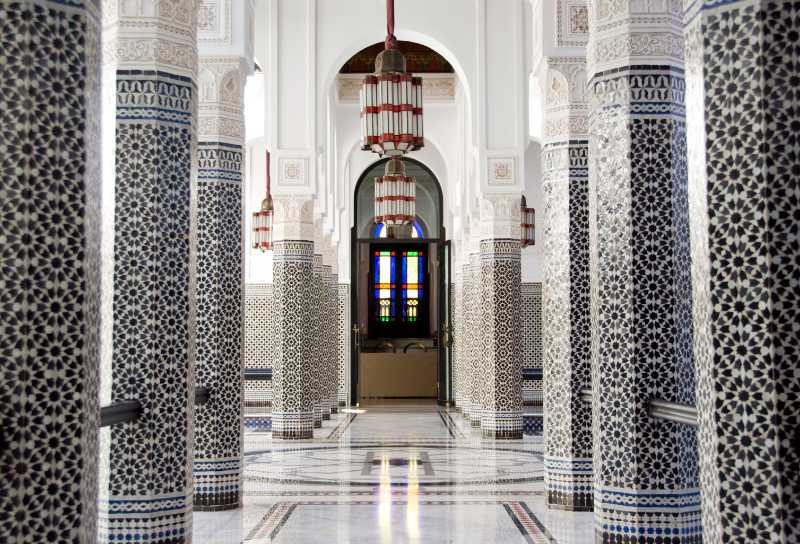
Moroccan Villi or Zellij, a unique type of terra cotta tile, is laboriously handcrafted by highly skilled artisans. It involves intricate geometrically shaped tile chips that form elaborate resplendent designs.
Riads are adorned with Zellij, evident in the courtyard fountain and wall fountains, often decorated with detailed multicolored Zellij designs inspired by nature, Arabic calligraphy, Islamic icons, and Amazigh influences.
Zellij also appears in Riad pools, floors, walls, tables, pillars, and interior décor.
Minimalistic and Ornamented Moroccan Plaster
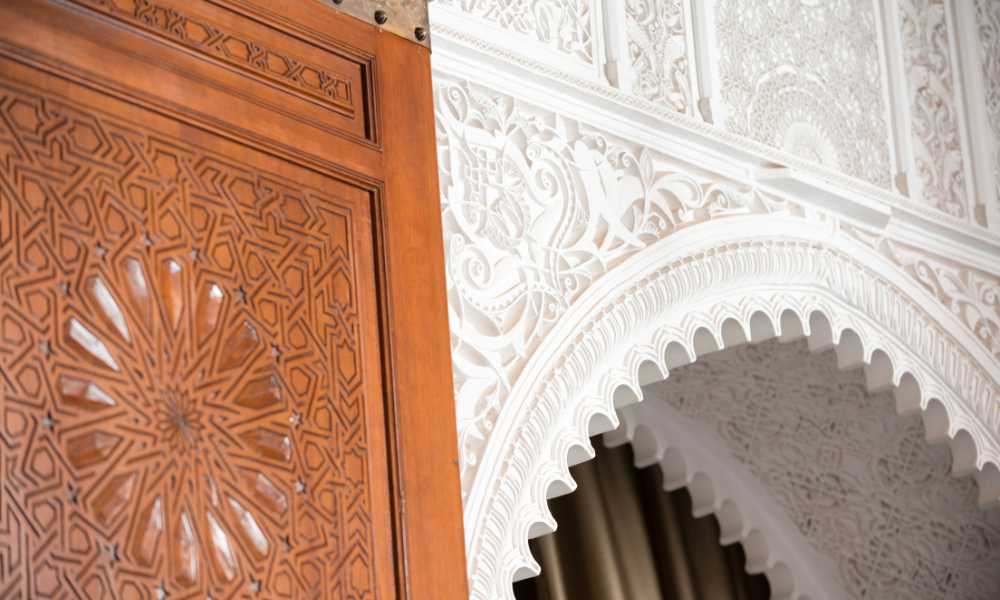
Lime or calcium gypsum plaster is omnipresent in Moroccan Riads. Tadelakt, indigenous to Marrakech, is impressive to look at but labor-intensive to complete. It involves numerous steps, from rendering compression and paper tracing to hand-carving designs and painting the plaster.
This plaster appears in its minimalistic, single-colored, flat style on outdoor surfaces, sinks, hammams, and rooftop terraces. In its sculptured form, it is the central element of the ceiling and interior walls, often complemented by other materials like glass or wood.
Common designs include geometric forms, calligraphy, and vegetation, in adherence to Islamic principles, which prohibit the depiction of living beings.
The Function of Riads in Moroccan Culture
Private Residence
In the past, Riads served as homes for well-off citizens, accommodating extended family members under one roof. This reflects Morocco’s close-knit lifestyle and strong family values.
The enclosed nature of Riads, with no half walls or exterior windows, ensures privacy, allowing family members, especially women, to enjoy picturesque views from their homes that would otherwise be found in public gardens.
While the terms Riad and Dar are often used interchangeably, traditionally, they have distinct characteristics. “
Dar” means house in Moroccan Arabic, referring to a smaller-sized Riad with a central courtyard and no garden.
Guesthouses and Hotels
These eclectically charming estates were later converted into guesthouses or boutique hotels. Aside from the traditional aspect, Riads provide a more intimate atmosphere than typical hotels.
With fewer rooms, they have a smaller number of friendly personnel which translates to more personalized attention and quicker service available at all times.
Community Gathering Places
Aside from providing a stay, Riads often serve as cafés whereby, for a small-priced ticket that includes a drink, visitors can stay for hours taking in clean air and mesmerizing atmosphere.
Bigger ones also host events with the possibility of privatization including birthdays, animations, receptions, parties and even professional seminars and photo shoots.
Since these quintessential Moroccan buildings lie at the heart of the Medina, they usually offer extra activities on request like traditional cooking classes and tour guides.
Renovation and Preservation of Moroccan Riads
Ancient Mosques, Madrasas, Mausoleums, Kesbas, Zaouias, Ramparts, and domestic properties like Palaces and Riads form an indispensable part of Morocco’s architectural heritage.
Unfortunately, some of these structures have suffered neglect, vandalism, desecration, and deterioration due to the elements, placing them at high risk of decay.
The restoration efforts involve multiple stakeholders, including the Ministry of Culture, Ministry of Endowments, and Cities’ Council, along with public organizations such as UNESCO and private enterprises. Well-reputed architectural firms and individual investors are also actively involved.
Examples of Renovated Riads
Riad Kniza-
Explore the epitome of Moorish architecture at Riad Kniza, a masterpiece by Morocco’s revered artisans. With 11 beautifully adorned rooms and a rich history, it’s your ideal base to discover Marrakech.
Nestled in the heart of the city, you’re just steps from Jema l’ Fna square, vibrant souks, and cultural landmarks.
Riad Kniza seamlessly blends tradition with modern convenience, ensuring an unforgettable Marrakech experience.
Riad Palais Sebban-
A vast Riad in the heart of Marrakech; originally built and owned by Caid Sebban in the 19th century.
Unfortunately, the property later remained in a state of decay until it was rescued by the French architect Rene Jean Pierre.
The renovation lasted four years and included the redesigning of each room separately to ensure that guests would lead a unique experience each time they stay there.
Riad Fes-
A jewel that lies in the old Medina of Fes. With it built between the 17th to 19th centuries, the building had multiple owners. Starting with Lahlou, a prominent tradesman who first built the land.
The property was then passed on to the influential Sefrioui family who worked on it for three years to bring it back to life. Riad Fes is described as a marriage of Western contemporary art with ancestral traditions of Fes.
Three Things to Consider when Picking a Riad
Location and proximity
Due to their traditional nature, most Riads are located in the old medina often in areas that are not accessible by car.
When picking a Riad it is a good idea to check its distance from the station and proximity to the city’s main attractions.
You can either get to the medina using a taxi and then your GPS or directly ask the Riad if they provide an airport/ train station shuffle.
Amenities and accommodations
Riads offer a wide range of amenities among which we find the basic ones like bedding, free Wi-Fi, toiletries, towels, private bathrooms, air conditioner and a rooftop terrace.
Additionally, there are some exclusive services like deep pool swimming, sunbathing, and Hammam spa as well as arrangements such as airport shuttle, car hire, and local transport hire and on-request activities such as cooking workshops and tour guides
That is why it is always important to ask which ones are offered with no additional cost and which ones require the payment of extra fees.
This is also a good idea if you have certain dietary needs or stay preferences (for instance, you would like a private balcony with a view on the garden).
It is safe to say that most riads have separate restaurants or serve food and drinks in the Riad itself. One might think relying on specialized restaurants is the best option.
It is, in fact, quite the opposite. Riads offer a long menu of delicacies and home-cooked meals that are one hundred percent authentic, highly aromatic and scrumptious.
The best dishes to try while staying at a Riad are Moroccan staple dishes (couscous, tajine, Bastillla, Sheep head, Ma’qooda, Tangia, Mechoui) along with pastries, cookies and sweets (Jawhara, Mhancha, Briouat, mesemen, sfenj, bghrir, Gazelle ankle, Ghriba) and the Moroccan mint tea.
Price
Riads, with their captivating architecture, mouthwatering cuisine, enchanting atmosphere, and exceptional hospitality, offer an extraordinary experience worth every penny.
Five-star Riads are naturally luxurious, paying meticulous attention to details, from welcoming gifts to high-quality furniture and modern amenities.
These Riads are spacious, featuring one or multiple pools and a separate restaurant serving delectable cuisine.
General tips and tricks for a successful travel to Morocco
- Always have cash in hand as many places do not accept cards.
- Do not take a taxi from the airport as they overcharge. Insead, have your Riad host take care of the matter.
- Beware of illegal guides in the old medina. Never talk to people who follow you around even after you show your uninterest in having a conversation.
- Refrain from shopping with guides seeing that they sometimes lead you to overpriced boutiques targeting tourists. Always shop where locals do.
- Moroccans are gifted in Language skills so there will often be someone who at least understands Basic English. However, for those rare occurrences, it helps to learn some conversational French or Arabic phrases or have access to a translation app.
- The old media is a maze. There is, however, always a way out so be equipped with Google map offline
- Beware of food allergies and sensitivities as restaurants might not ask you first.